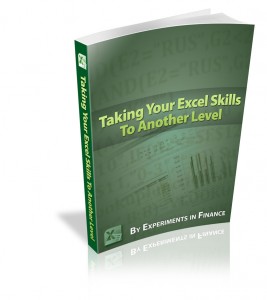Valuedog: This list of potentially undervalued stocks is free for anyone to use. At Michigan, there were a couple of complementary courses on investing that were based on quantitative screens, wherein a programmed algorithm searched through a huge database of stocks to find matches that fit the criteria entered. The professor for one of those classes tries to regularly publish the results from the “multifactor valuedog” screen they use (along with the screening algorithm) as well as another quant screen called “dredging the value portfolio” (see criteria used) on this website every month or so. (Of course, it tends to be more up-to-date during the school year, when students use stocks in those lists to work on their projects.) The lists tend to be mostly comprised of small-cap stocks.
The Value 40 Fund: This is also a free list published by the Michigan business school to the public and is consistently and regularly updated monthly. The Value 40 list shows potential value investments, also based on a quant screen. Interestingly, from what I can tell, there is little overlap between the Value 40 list and the Valuedog list mentioned above, and my guess is that the Valuedog list has more stringent criteria. Unfortunately, since the criteria aren’t published, there’s no way to find out for sure.
Earnings Torpedo: The group that publishes the Value 40 Fund also publishes a free list of stocks where you shouldn’t invest, again based on a quant screen. Like the Value 40 fund, the criteria for the screen aren’t available to the public. But, they do show some results from the past of their successes. Keep in mind that there are probably also instances where stocks that appeared on this screen went on to overcome their problems or became acquisition targets, but these aren’t shown on the site.
Yahoo! Finance’s Java-based Stock Screener: As a starting point, I personally tend to use the java-based version of Yahoo’s Stock Screener since it lets you enter in more criteria than their browser version. By entering some financial ratio criteria based on value investing (the link here is to a high-level intro that I will change when I get around to writing a more in-depth explanation of these ratios), I can get some idea of whether or not there are currently any potentially good opportunities. I have to keep in mind that Yahoo’s calculations will always be less stringent than Graham’s, but it’s a good starting point. After that, it’s off to look at historical financials to do my own calculations and then to delving into 10Ks to find out about companies and competitors.
In my personal experience, Earnings Torpedo is an interesting list to look at, but not one I’ve actually used. The Value 40 fund is also a good starting point, but I have yet to find a listing that I personally think is worth buying. Several are very low volume and illiquid stocks. I use Valuedog the most, though again, most of the stocks on this list wouldn’t fit Graham’s criteria for defensive value investments because they’re too small. Potential leads for what he calls “enterprising” value investments might show up here though.
***************************************************
Look Good at Work and Become Indispensable Become an Excel Pro and Impress Your Boss

***************************************************

